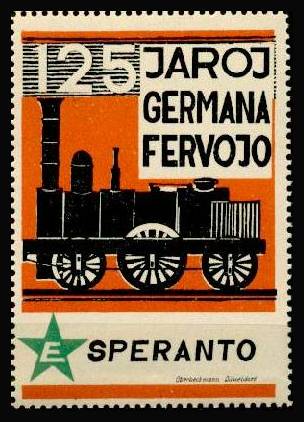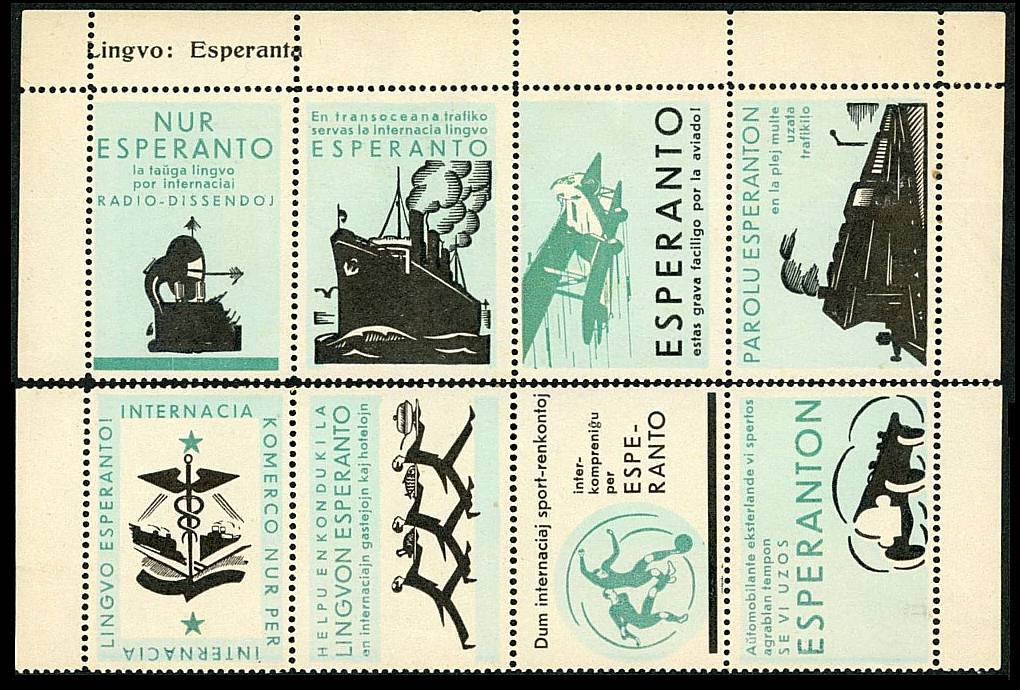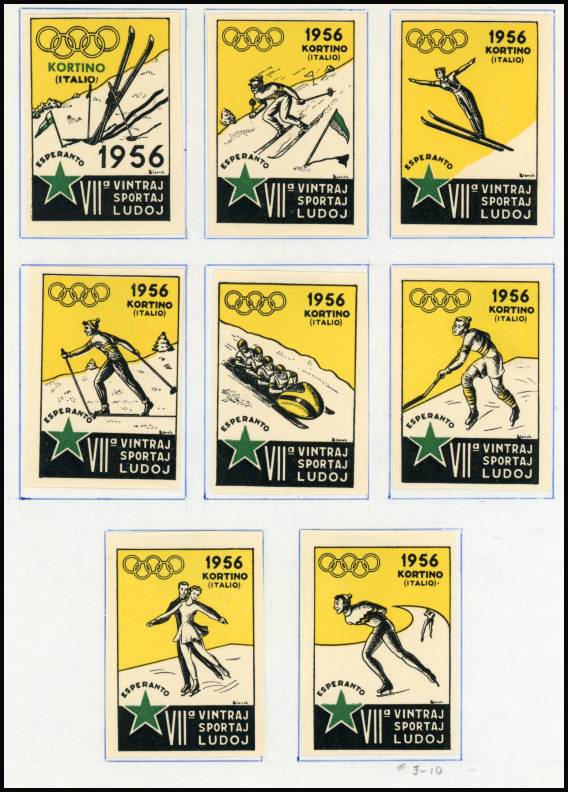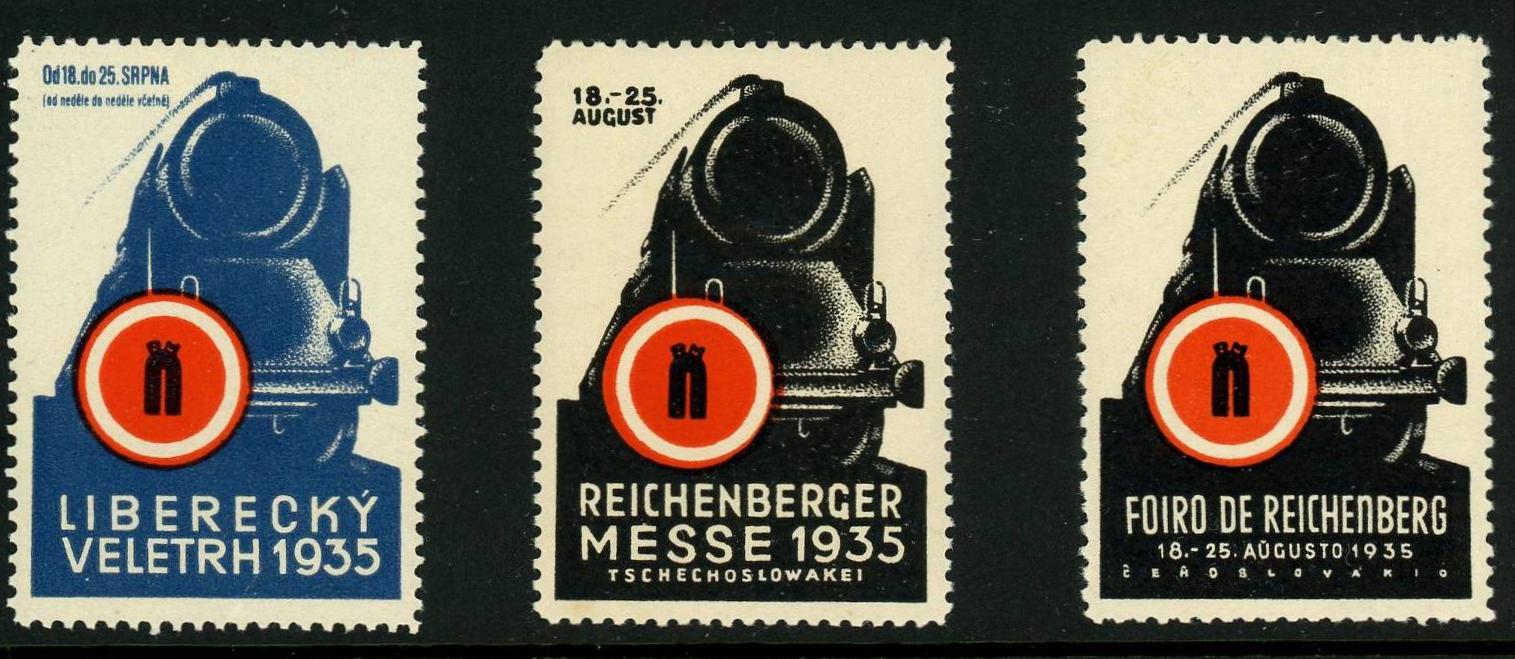|
INTRODUCTION
History of Esperanto
What are Esperanto poster stamps?
Poster stamps for:
-
International Esperanto events
-
National, regional & local
-
Esperanto promotion - in Esperanto
-
Esperanto promotion - in other languages
-
Esperanto summer camp!
-
Non-Esperanto events
-
Related Organizations
-
The Founder
-
The Green Star - Verda Stelo
-
A flag story
-
Rose Island
-
Miscellaneous
-
Ido - Esperanto derivative
|
|
non-Esperanto events

125th anniversary of German railways - 1960
It seems to me that one important test of the success of a "universal language" is how much it gets used on
publicity for events having nothing to do with that language itself. It doesn't matter how much you
publicize something - if people don't use it, it is not a success.
Esperanto's earliest success in this regard came in 1914, at the
Bugra - the Internationale Ausstellung für Buchgewerbe und Graphik,
or International Exhibition for the Book Industry and Graphic Arts, in Leipzig. Official poster stamps advertising that event
were published by the promoters in 13 languages - German, French, English, Italian, Spanish, Portuguese, Danish, Swedish, Dutch, Russian, Chinese, Japanese - and Esperanto.
The image below shows a complete set. The stamp at the left end of row 3 is the one in Esperanto - those J's are the Esperanto S's - they make the words plural.

Moreover, there was a separate Esperanto Pavilion at the show, which issued
its own stamp in a rainbow of colors, though they're in German, not Esperanto. Go figure.
Still, success at one event like that could have been a fluke, just the result of efforts by a very active local group of Esperantists.
Are there other examples?
Yes, and they range from other international fairs like the Bugra to the Olympic Games, though it is debatable how
"official" some of the issues were. Nonetheless, they do show Esperanto's popularity, especially considering that no other artifical
language has even one such success. Below are some examples of Esperanto poster stamps for other non-Esperanto events.
|
Had there been Olympic Games in 1916, I suspect their poster stamps would have featured a version in Esperanto.
The poster stamp for the 1912 Games
was issued in 16 languages - but not in Esperanto - so there was a precedent for multi-lingual issues, and the Leipzig Bugra of 1914
had included Esperanto among the languages on its publicity stamp (see above), and many would say that Esperanto was at its peak in 1916.
But World War I prevented the 1916 Games, and the 1920 Games were severely reduced. It was 1932 before the practice of multi-lingual stamps for
the Olympics was resumed, and I find that puzzling. If ever an international event lent itself to multi-lingual publicity, it is the Olympic Games.
And keep in mind that poster stamps were VERY popular back then. Whatever.
|
|
1932 Los Angeles

Sheetlet of 8 Esperanto poster stamps, circa 1932
|
I already showed
the English version of this sheetlet on the Introduction page of this exhibit. It's not an official issue,
none of the US publicity was in foreign languages, but the Cologne-based Esperanto magazine HEROLDO DE SEPERANTO
took it upon itself to publicize Esperanto in relation to various topics, including Olympic Games. See? The third stamp
in the bottom row shows some sort of sports event, and the text translates "AT OLYMPIADS and international sport meetings SPEAK ESPERANTO."
The sheetlet was issued in 12 languages that I know of - English, French, Italian, Swedish, Dutch, Spanish, Czech, Esperanto, German, Hungarian, Polish, and Serbo-Croat.
You can see examples of all 12 on the INTRODUCTION page of this exhibit, and
HERE
is a composite image of ten of them in (almost) full sheetlets.
|
|
1956 Cortina, Melbourne, and Stockholm

Set of 8 Esperanto poster stamps, Cortina Olympics, 1956

Set of 10 Esperanto poster stamps, Melbourne Olympics, 1956
|

Set of 4 Esperanto poster stamps, Stockholm Olympics, 1956
These sets occur in other color combinations, and were issued in sheetlets of all the designs. More
HERE and
HERE
and
HERE
The Olympic rings imply these were issued with the approval of the IOC, but the sets were not issued
in any other languages.
|
|
There were similar Esperanto-only stamps issued for the Games of
1960,
1964, and
1968.
|
Budapest International Fair
Reichenberg Fair
|
Reichenberg is the German name for the Czech city of Liberec.
Another multi-year affair, the Reichenberg (Liberec) Fair was first held in 1920, and issued stamps for at least the years 1926 through 1938.

Set of 3 poster stamps, Reichenberg Fair, 1935
3 languages - rightnmost stamp is in Esperanto
Reichenberg issued its stamps in fewer languages - I have seen only Czech, German, French, English and Esperanto.
Just the Esperanto versions, 1926-1938
|
Prague Fair
|

Prague Fair stamps in Esperanto
The Prague Fair (PVV) issued multi-language stamps for only a few years - I have seen 1921 and 1926 thru 1928.
Only
the 1921 set
included an Esperanto version, though there was also
this set,
in 16 languages, including Esperanto, with no year.
|
Lyon International Fair
|

Set of 5 poster stamps for 1934 Lyon Fair
Esperanto at left
Revived in 1916 from its medieval roots, the Foire de Lyon has been presented most years since,
and poster stamps have been issued for many of the events, often in multiple languages. Stamps were issued in Esperanto
from 1929 through 1934. Indeed there were even full-sized posters for the fair in Esperanto for
some of those years.

Assorted publicity for the Lyon Fair in Esperanto, 1929 to 1934
|
ASSORTED EVENTS
|
|










